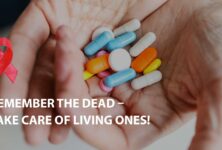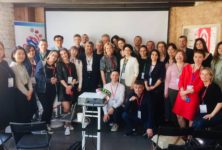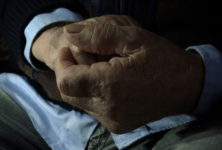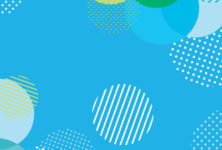On May 15, an exhibition “The Color of Blood – Fire, Love and Life” was opened in the Art Salon of the Poltava Regional Organization of the National Union of Artists of Ukraine. The exhibition participants tried to draw public attention to the problems of people who live with HIV.
On May 20, the world commemorates the World Remembrance Day of AIDS Victims. On the eve of this date, the concerned artists – famous professional artists Ruslana Anichina, Grigoriy Volkov, Anatoliy Lavrenko, Galina Ridna, Tatyana Shulyak, Oleg Mingalev speak in the language of art about people who died of AIDS, as well as point out to the shameful phenomena – discrimination and stigmatization of those who live with HIV.
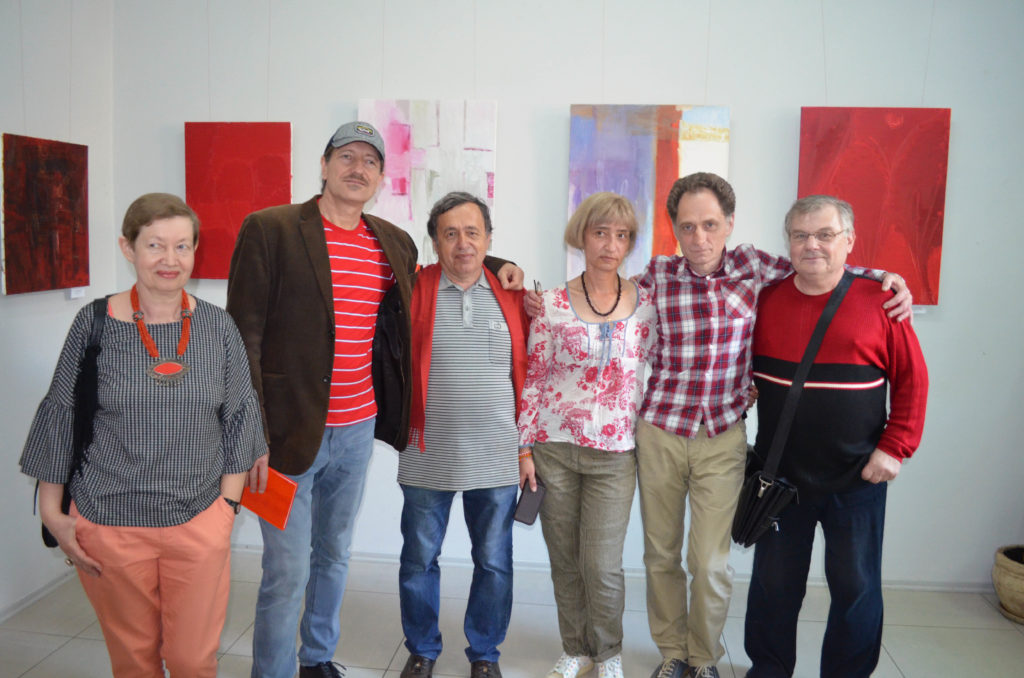 The exhibition curator, the chairman of the public organization “Club Kviten” Yevgeniy Anichin said during the exhibition opening that for Poltava the problem of HIV/AIDS is as relevant as for other areas of Ukraine and the world. He quoted a dishearting information about the spread of the disease in this city. Thereofore, the first case of HIV infection was discovered in 1981. Over the next decade, physicians registered only isolated cases of HIV/AIDS – during this time, the virus was detected in 18 people. And in 1997 an epidemic began in Poltava and the region: then there were already 230 infected people. Since then and up to now, 6,800 HIV/AIDS cases have been registered in Poltava region, 1,178 people have died of AIDS. And this is only official statistics.
The exhibition curator, the chairman of the public organization “Club Kviten” Yevgeniy Anichin said during the exhibition opening that for Poltava the problem of HIV/AIDS is as relevant as for other areas of Ukraine and the world. He quoted a dishearting information about the spread of the disease in this city. Thereofore, the first case of HIV infection was discovered in 1981. Over the next decade, physicians registered only isolated cases of HIV/AIDS – during this time, the virus was detected in 18 people. And in 1997 an epidemic began in Poltava and the region: then there were already 230 infected people. Since then and up to now, 6,800 HIV/AIDS cases have been registered in Poltava region, 1,178 people have died of AIDS. And this is only official statistics.
“No one can be sure that this disease will not affect him”, Yevgeniy Anichin is convinced. “After all, the people who died from it were no different from others – they lived next to us, they also had families, loved, contemplated plans for the future”.
In his opinion, discrimination and stigmatization towards people living with HIV is associated with a deeply rooted fear of death, which is clearly expressed in the fear of blood. After all, the human immunodeficiency virus is found in the blood, therefore, a considerable part of society transposes their fear, rejection, desire to keep themselves away from this substance directly on people living with HIV.
However, it is impossible to stay aloof from this problem. But you can and should work on its solution – both globally and in changing attitudes at the individual level. Evgeniy Anichin quoted the following figures: the Global Fund to Fight AIDS, Tuberculosis and Malaria has provided Ukraine with the aid of $428 million since 2003. It is because of this that many people living with HIV receive antiretroviral drugs and live an active full-fledged life. Our country will receive another $120 million from this fund during 2018-2020.
At the individual level, we need to work on ourselves, resolve our fears, to become aware of their existence and destructive influence, to get rid of them and, upon the final analysis, to develop tolerance and acceptance of equality of people living with HIV. The art works showcased at the exhibition “The Color of Blood – Fire, Love and Life” is aimed at this. Each work here is full of red color and reveals its different aspects. After all, red is not only blood. This color can be used to paint beautiful things that make this world enchanting and attractive – flowers, ripe fruits, autumn foliage, the setting sun … And although traditionally the shades of red represent anger, sin, aggression, excitement, the same color is associated with vitality, power, love, finally, with life itself. Therefore, the artists offer the audience a dialogue based on different aspects of red, on changing his perception – from things that frighten and repel, to a life-affirming optimism of existence.
During the opening of the exhibition, each artist shared with his audience their vision of color with which they had to work within the project.
Ruslana Anichina says, “I love all colors, but I’m especially fond of red. For me it is the color of life, strength and vitality, inspiration and love. Sometimes it scares, and sometimes gives strength to work, to achieve the goal”.
Grigoriy Volkov: “Red color inspires, provokes, excites. Red represents the energy of life and hope”.
Anatoly Lavrenko: “Red is the color of the sun, which gives us the energy of life. Red is the color of blood. Blood, like water, is essential substance of everything that exists. This is a magical color. In my works I wanted to show the purity of blood”.
Oleg Mingalev: “Red traditionally symbolizes the color of the base chakra, which ensures the replication of mankind”.
Galina Ridna: “Red color is my life. It’s work and vibrant emotions. These are the goals which I set for myself and have achieved”.
Tatiana Shulyak: “The exhibition is interesting, even for me, although I never liked red. My preferred color selection is pastel, tender shades. But when I started drawing, it turned out that from time to time I created something in red. After all, it is the color of strength and passion, the color of inner energy. And now I even want to do more work like this”.
The exhibition was supported by the Department for Family, Youth and Sports of the Poltava Oblast State Administration, the Poltava Regional Organization of the National Union of Artists, the Charitable Foundation “Meridian”. It attracted attention of artists, art critics, collectors, mass media, and citizens. All who visited the Art Salon this day noted that each work and the exposition as a whole leave a deep impression, evoke emotions, make one think about the issues highlighted in the project.
However, the exhibition is not a one-off event, but a part of the same creative project, the realization of which was launched within the framework of the program “Unauthorized Entry Permitted”. This program is implemented by the Poltava NGO “Club Kviten”, together with the “Consortium of key communities of Ukraine”. Its goal is to foster a tolerant attitude towards the representatives of key communities in the society. Most of the artists who joined it are members of the creative group “Art Mission”, which operates as part of the public organization “Club Kviten”. The plans are to show the exhibition in other cities of Ukraine, because the problem of discrimination and stigmatization towards representatives of key communities exists not only in Poltava. And the project participants believe that their position expressed in the language of art will help to overcome it in our entire country.
Anna Kozelska


 ПОИСК ПО САЙТУ
ПОИСК ПО САЙТУ  поиск по ресурсному центру
поиск по ресурсному центру 